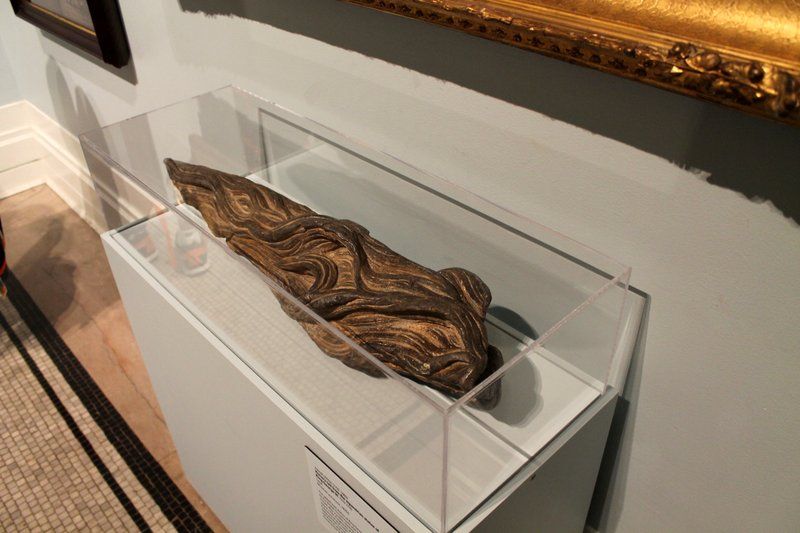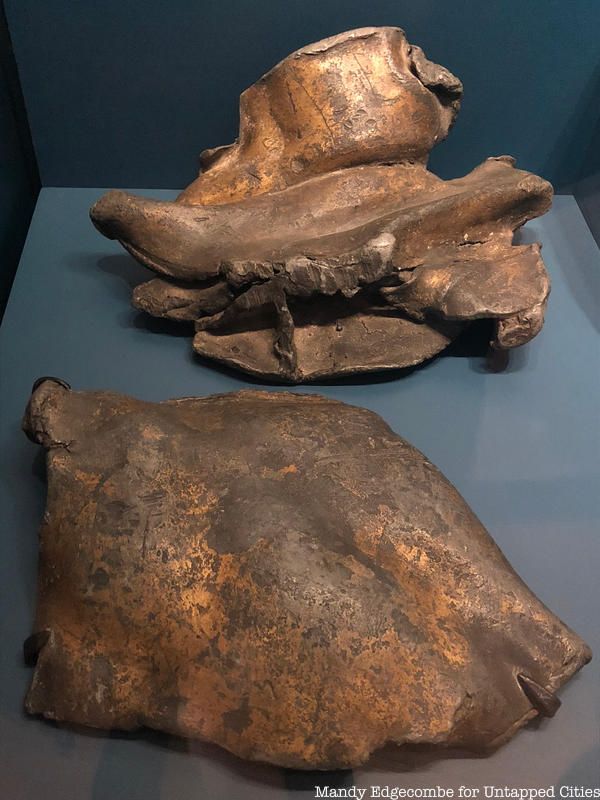NYC’s Forgotten ‘War on Christmas Trees’
Discover how an obscure holiday crackdown affects festive street vendors today!


On July 9th, 1776 a buzzing crowd of New Yorkers gathered in New York Common, now City Hall Park, to hear a public reading of the newly signed Declaration of Independence for the first time. After being signed in Philadelphia on the fourth, the document made its way to George Washington‘s headquarters at 1 Broadway in New York City. That evening, emboldened by the revolutionary words of the document, a zealous crowd of patriots barreled down to Bowling Green and defiantly toppled a gilded equestrian statue of King George III which had kept watch over the park from high atop a marble pedestal since 1770.
While much of the lead statue was melted down into ammunition fired back at British troops during the ensuing Revolutionary War, some fragments of the statue and the pedestal were destined for a different fate. Over the past couple centuries pieces of the statue have disappeared, turned up and disappeared again. Today, you can find some pieces of the statue and pedestal in museums and other surprising locations, though the location of many sections, like his head, remain unknown.
After the statue was pulled down, most of its gilded lead segments were shipped to Litchfield, Connecticut. There it was received by a depot where women and children of the town melted it down into 42,088 bullets to be used by American troops. These bullets however only accounted for about 2,000 pounds of lead, roughly half the weight of the statue. So where did the rest of the lead go?
 Photograph Courtesy of the New-York Historical Society
Photograph Courtesy of the New-York Historical Society
Much of the known fragments of the statue can still be found in New York City. The tail of King George’s metal horse can be found on display inside the New-York Historical Society. Along with the detailed horse tail, the Historical Society also has possession other fragments which likely came from the horse’s body, and King George’s cape, since the fragment still maintains the detail of a patterned sash. The Historical Society has a total of six fragments including the tail. Four of these pieces were found in 1871 at the site of the old Sloan House in Wilton, Connecticut and purchased by the Historical Society in 1878 after members pooled money to make the purchase. There are also tools that were used to make the bullets out of the statue lead. The horsetail is the only piece currently on display and you can find on the second floor of the museum in Dexter Hall. It is displayed among other items partaining to the American Revolution in the Historical Society’s special exhibit, Revolutionary Summer.
The New-York Historical Society also has in its collections part of the marble pedestal on which the statue once stood. In 1783, the stone somehow became the tombstone of Major John Smith of the British army when he was buried in Paulus Hook in Jersey City, New Jersey. Over twenty years later, Smith’s grave was leveled and the stone was sold to Cornelius Van Vorst, Sr. who installed it as a kitchen step in his Jersey City mansion. Upon Van Vorst Sr.’s death, his son inherited the stone and the mansion. He moved the stone into the garden. When Van Vorst was going to sell the Jersey City mansion, he received an offer from Major Smith’s descendants to buy the stone back. Seeing the stone as an important symbol of the American Revolution, Van Vorst turned down the offer. Before he left Jersey City, he gifted the stone to the New-York Historical Society.

Fragments of the statue on display at the American Revolution Museum in Philadelphia on loan from N-YHS
Most of the found lead segments have turned up in and around Wilton, Connecticut, focused largely in Davis Swamp where it is believed that local Tories, loyal to the crown, buried fragments that they stole shipment that came from New York City. The Wilton Historical Society has a small fragment in its collection and the Museum of Connecticut History has a twenty pound segment, believed to be part of the cape or horse’s mane. This fragment had been passed down through generations of the Lambert family, a prominent Wilton family who purchased multiple pieces of the statue from the Sloans in the mid-1800s. Many pieces of the statue discovered in the Wilton area are likely still in the hands of private owners.
Still, the largest mystery yet to be solved is what happened to King George’s head? The head alone would account for about fifty pounds of lead. When the statue was torn apart the head was kept separate from the rest of the pieces and sent to a tavern. The plan was to put the head on a spike for public display, as was done with the heads of common criminals at the time. Word of this plan got to Captain John Montressor for the British army who set out to foil it. In his journal, Montressor writes about how the Patriots had “cut the nose off, clipt the laurels that were wreathed round his head, and drove a musket bullet part of the way through his head and otherwise disfigured it.”
Montressor’s spy was able to retrieve the head and bury it near Fort Washington. It was dug up after the surrender of Fort Washington and sent aboard the Lady Gage to Lord Townsend in England. Montressor sent the head as a message, to show “the infamous disposition of the ungrateful people of this distressed nation.” According to the journals of the former Governor of Massachusetts Bay, Thomas Hutchinson, the head made it to the Townsend home safely. Hutchinson recorded that Mrs. Townsend showed it to him during a visit and while “the nose [was] wounded and defaced,” it retained “a striking likeness.” Since that 1777 sighting, there has been no record of the head being seen ever again.
To hear more about the revolutionary destruction of King George III’s statue and the preceding colonial history of New York City join our upcoming tour of the Remnants of Dutch New Amsterdam! On this tour you’ll see the site where the statue once stood and get to literally touch a remnant of that time, the Bowling Green fence which still bears the tangible scars of revolutionists chopping off the crowns which once stood atop each fence post.
Tour of The Remnants of Dutch New Amsterdam
Next, check out the history of Evacuation Day, a November holiday that was once more important than the 4th of July!
Subscribe to our newsletter